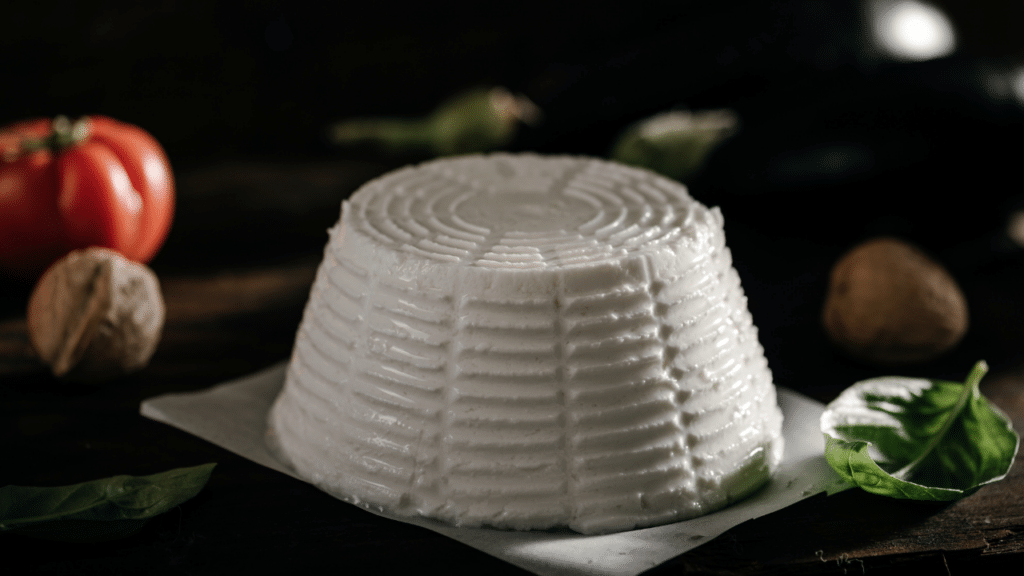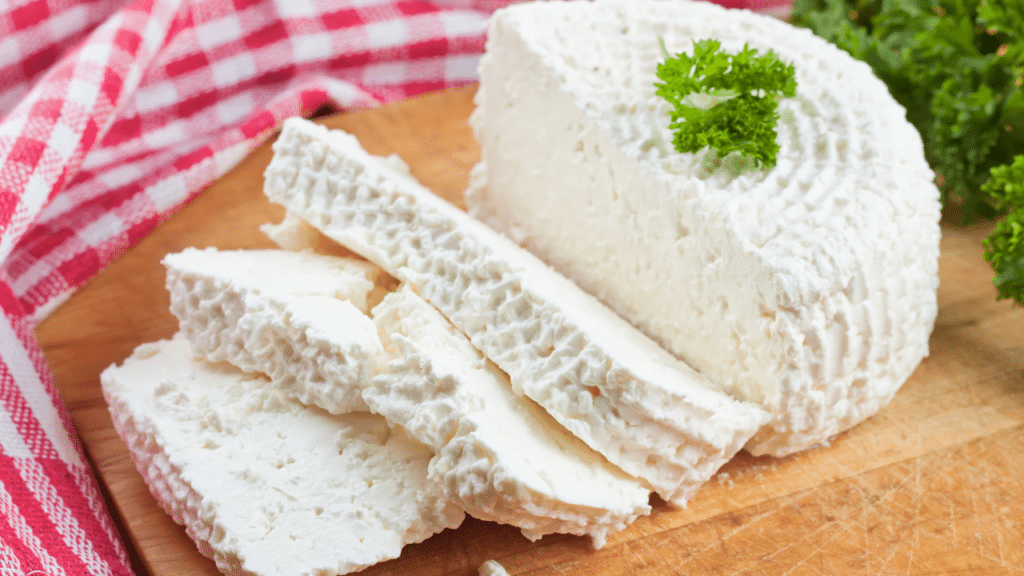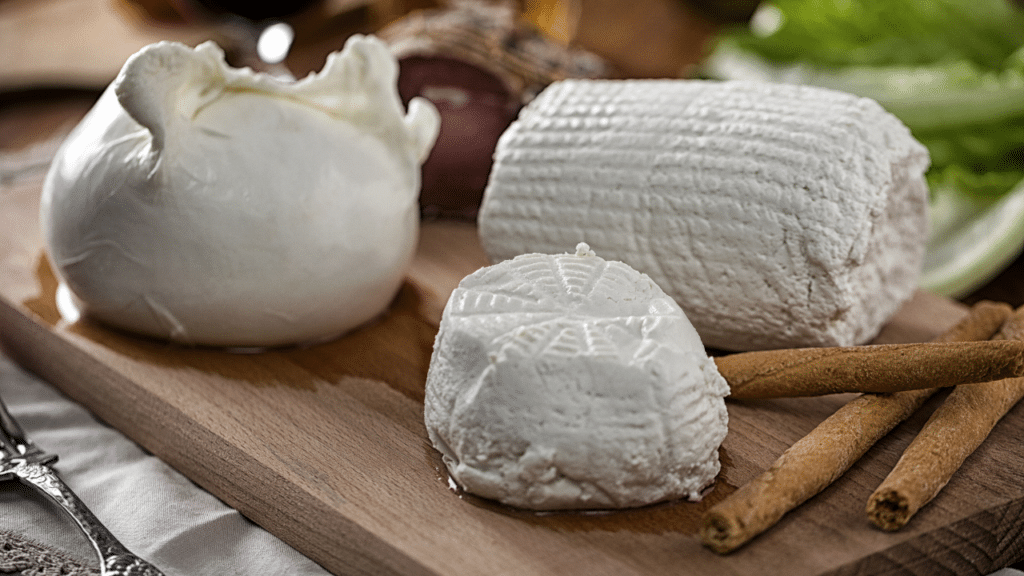Ricotta cheese, a versatile and classic Italian cheese, is made from the whey left over from the production of other cheeses. With its creamy texture and mild, slightly sweet flavour, ricotta is a staple in a variety of dishes, from desserts like cannoli and cheesecake to savoury favourites like lasagna and stuffed pasta shells. You do not need to cook ricotta cheese before using it in recipes. It can be eaten fresh, straight from the container.

Also Read: Why Are Cheese Curds Illegal? Unveil the Mystery!
Contents
- 1 Do You Need To Cook Ricotta Cheese?
- 2 Why doesn’t ricotta cheese need to be cooked?
- 3 2. Quick Production
- 4 Ricotta Cheese Cooking Process
- 5 Food Safety Concerns Of Ricotta Cheese
- 6 Enhancing Flavor And Texture Of Ricotta Cheese
- 7 Ricotta Cheese Nutritional Benefits
- 8 Cooking Techniques And Recipes By Ricotta Cheese
- 9 Culinary Applications Of Ricotta Cheese
- 10 Shelf Life And Storage Of Ricotta Cheese
- 11 Final Tips And Considerations
- 12 Can I eat ricotta cheese by itself?
- 13 Can ricotta cheese be eaten cold?
- 14 Should you heat ricotta?
- 15 Does ricotta mean re-cooked?
- 16 Faq
- 17 Final Comment
Do You Need To Cook Ricotta Cheese?
No, you do not necessarily need to cook ricotta cheese. Ricotta is a fresh cheese that is safe to eat without additional cooking. Many people enjoy ricotta in its raw form, using it as a spread, topping for crackers, or incorporating it into dishes like salads.
Why doesn’t ricotta cheese need to be cooked?
Why ricotta cheese does not need to be cooked and how to eat it, the benefits of eating it, and other things are given below:
1. Fresh Cheese
Ricotta is a fresh cheese made by coagulating whey proteins. It doesn’t undergo a lengthy aging process like some other cheeses.
2. Quick Production
The process of making ricotta involves heating whey, causing proteins to coagulate. This process is relatively quick compared to the fermentation and aging of other cheeses.
3. Inherent Cooking Process
Coagulation during ricotta production essentially “cooks” the cheese, making it safe to consume without additional cooking.
4. Mild Flavor
Ricotta has a mild and creamy flavour, making it suitable for raw consumption. It’s commonly used in salads, spreads, or as a topping without cooking.
5. Versatile Use
While ricotta can be cooked in various dishes for added texture and flavour, its natural form is often enjoyed without cooking in various applications.
Ricotta Cheese Cooking Process
Ricotta cheese is a delicately flavoured, creamy Italian whey cheese often used in various dishes, from pasta to desserts. Many people question if there is a need to cook this type of cheese before consumption. Ricotta can be used straight out of the container and is perfectly safe to eat raw. This makes it a versatile ingredient in recipes like salads, dips, and fillings for lasagnas and ravioli, where it adds a light, fluffy texture.
| Cooked Ricotta | Uncooked Ricotta |
| Develops a richer texture | It preserves a light, creamy consistency |
| It offers a deeper flavour profile | It retains a delicate, mild taste |
| Suitable for baked dishes | Ideal for cold dishes or as a fresh topping |
It is essential to understand that cooking ricotta cheese can transform its texture and enhance its flavour, making it a more robust addition to cooked dishes. Meanwhile, the uncooked variety remains fresh-tasting and can add a softer dimension to recipes. Both forms have unique uses and can be chosen based on the desired outcome of the prepared dish.

Also Read: Why is ricotta cheese hard to find? Scarcity Unveiled!
Food Safety Concerns Of Ricotta Cheese
Consuming uncooked ricotta cheese poses certain health risks owing to the potential presence of harmful bacteria like Listeria monocytogenes. These pathogens can lead to foodborne illnesses, with symptoms ranging from mild gastrointestinal discomfort to more severe conditions, particularly in pregnant women, newborns, the elderly, and individuals with weakened immune systems. The Centers for Disease Control and Prevention (CDC) report that cheeses made from unpasteurized milk are 50 to 160 times more likely to cause foodborne illness than those made from pasteurized milk.
For recipes that require baking or cooking, such as lasagna or stuffed shells, using ricotta cheese straight from the container is generally safe, as the cooking process will eliminate most harmful bacteria. Nevertheless, specific dishes demand cooked ricotta for both safety and textural reasons. A creamy and smooth consistency is derived from ricotta that has been heated, which is essential for creating indulgent fillings and sauces. Therefore, understanding the intended use of ricotta cheese in a recipe is critical to ensure the final dish’s safety and quality.
Enhancing Flavor And Texture Of Ricotta Cheese
Ricotta cheese undergoes a remarkable transformation when exposed to heat. Cooking can significantly enhance its flavour profile, bringing out a deeper, more complex taste that remains subtle yet pronounced. A gentle warming can escalate the intrinsic sweetness and reduce any potential graininess, leading to a smoother texture that integrates better with other ingredients in a dish.
The heat encourages the proteins within ricotta to denature and reset in a configuration that’s both denser and creamier. Those keen on baking or cooking with ricotta will notice that as it heats, the cheese becomes more pliable and adopts a consistency that can take any recipe to the next level. Whether incorporating it into lasagnas or cheesecakes, the difference is palpable and usually preferred.
Ricotta Cheese Nutritional Benefits
Ricotta cheese, known for its soft texture and mild flavour, is a staple in various recipes, from classic lasagnas to decadent desserts. Concerns regarding nutrient retention often arise when considering whether to cook this cheese. Interestingly, cooking ricotta cheese can enhance its nutritional value. Heat can potentially increase the bioavailability of certain minerals, such as calcium, making them easier for the body to absorb.
Cooking may also reduce moisture content, which concentrates the nutrients in a smaller volume, leading to an increased intake of proteins and fats per serving. Nonetheless, it’s crucial to maintain moderate temperatures to avoid denaturing proteins or losing heat-sensitive vitamins. Ricotta cheese can offer variable nutritional profiles, depending on whether it is consumed fresh or cooked, allowing for flexibility based on dietary preferences or specific health goals.
Cooking Techniques And Recipes By Ricotta Cheese
Ricotta cheese is versatile and often used fresh in dishes like lasagna or salads. Despite this, certain recipes benefit from cooking ricotta to enhance flavour and texture. One of the best methods for cooking ricotta involves baking. Baking helps remove excess moisture, resulting in a creamier and richer consistency. An alternative method is to integrate ricotta into sauces or fillings, gently heating it until it reaches the desired creamy state. Do remember cooking at a lower temperature is key to preventing curdling and maintaining the delicate nature of the cheese.
For those keen on experimenting, here are some delicious recipes involving cooked ricotta:
- Baked Ricotta: Infuse herbs and spices for a warm dip or spread.
- Ricotta Gnocchi: Mix cooked ricotta with flour and egg, a softer alternative to traditional potato gnocchi.
- Stuffed Pasta: Enhance ravioli or cannelloni with cooked ricotta blended with other cheeses and seasonings.
- Ricotta Cheesecake: Utilize cooked ricotta for a smoother and denser dessert.
Culinary Applications Of Ricotta Cheese
Ricotta cheese is a versatile ingredient that enhances the flavour and texture of various Italian dishes. Traditionally, it does not require cooking before being added to recipes. However, gently heating ricotta can deepen its creamy texture and enrich its mild taste, making it a favorite in classic and modern Italian cuisine.
Many chefs use cooked ricotta cheese to create a range of delectable dishes. Lasagna, with its layers of pasta, rich tomato sauce, and melted mozzarella, is heightened by the smooth addition of ricotta. Another dish, ricotta gnocchi, offers a delightfully soft alternative to the traditional potato variety. Stuffed shells, ravioli, and even sweetened ricotta fillings for desserts like cannoli and cheesecakes benefit from the gentle cooking process of the cheese.
- Ricotta cheese is used in lasagna for creamy layers.
- Soft-made ricotta gnocchi is an alternative to traditional gnocchi.
- Stuffed shells with rich, warming ricotta filling
- Cheesecakes and cannoli with subtly sweetened, cooked ricotta

Also Read: Why are my green beans fuzzy? Unraveling the Mystery
Shelf Life And Storage Of Ricotta Cheese
Cooked ricotta cheese displays remarkable shelf stability when stored correctly, remaining fresh and safe for consumption over an extended period. Ensuring proper refrigeration is key; maintain a consistent temperature below 40°F to preserve its quality. Exposure to higher temperatures can drastically reduce the cheese’s shelf life and potentially lead to spoilage.
Always store cooked ricotta cheese in an airtight container to prolong its longevity. This prevents the intrusion of moisture and other contaminants. Consider wrapping the container with cling film or aluminium foil for added protection. If large quantities are involved, dividing the cheese into smaller portions before storage can be beneficial, as it minimizes the amount of cheese exposed during each use.
| Storage Criteria | Details |
| Temperature | Keep below 40°F |
| Container | Use an airtight container |
| Protective Wrapping | Optional cling film or aluminum foil |
| Portion Storage | Divide into smaller quantities |
Final Tips And Considerations
Cooking ricotta cheese may vary depending on its intended use. Utilizing ricotta in recipes that require heating and baking, such as lasagna or stuffed shells, naturally incorporates the cooking process. Conversely, for dishes served cold, like ricotta cheesecake or dips, there is no need to cook the cheese separately.
It’s crucial to assess the recipe requirements and the desired texture when deciding whether to cook ricotta. The cheese’s freshness and moisture content can influence the outcome. While some recipes benefit from the creaminess of uncooked ricotta, others may require a firmer texture achieved through cooking.
Can I eat ricotta cheese by itself?
Absolutely, you can eat ricotta cheese by itself! Many people enjoy ricotta’s mild and creamy flavour without any additional preparation. It’s a versatile cheese that can be consumed independently or with various accompaniments. Here are a few ways you can enjoy ricotta cheese by itself:
- Plain: Scoop a spoonful of ricotta and enjoy its creamy texture and mild taste.
- Toppings: Add a drizzle of honey, a sprinkle of cinnamon, or a few fresh berries on top of a serving of ricotta for a delicious and easy dessert or snack.
- Crackers or Bread: Spread ricotta on crackers or toasted bread for a quick and satisfying snack.
- Salt and Pepper: Season ricotta with a pinch of salt and pepper to enhance flavour. You can eat it with a spoon or spread it on crackers.
- Olive Oil and Herbs: Drizzle extra virgin olive oil over ricotta and sprinkle fresh herbs like basil or thyme for a simple and flavorful treat.
- Fruits: Pair ricotta with fresh fruits like sliced strawberries, figs, or grapes for a refreshing and healthy snack.
Can ricotta cheese be eaten cold?
Yes, ricotta cheese can be eaten cold. In fact, it is commonly consumed in its cold or room temperature state. The mild and creamy texture of ricotta makes it a versatile cheese that can be enjoyed in various ways without the need for cooking.
Should you heat ricotta?
Heating ricotta is optional, and whether or not you should heat it depends on your preference and the culinary application. Here are some considerations:
- Raw Consumption: Ricotta is a fresh cheese, and many people enjoy it in its raw form without any additional heating. It has a mild and creamy texture works well in salads, spreads, or topping for various dishes.
- Cooking Applications: While not necessary, heating ricotta can alter its texture and flavour. Cooking can make it softer and more spreadable, which is desirable in certain recipes. Ricotta is commonly used in sweet and savoury dishes, such as pasta fillings, desserts, and baked goods.
- Recipes that Require Heating: Some recipes specifically call for heated ricotta. For example, you might use it as a filling for stuffed shells or lasagna, where the heat helps to meld the flavours and textures together.
- Melting or Incorporating into Sauces: Ricotta can be heated and melted into pasta sauces or used as a creamy element in warm dishes.
Does ricotta mean re-cooked?
The word “ricotta” comes from Italian, and it translates to “recooked” or “twice cooked” in English. The name reflects the traditional method of making ricotta, which uses whey, a byproduct of cheese production. The whey is heated, and the remaining proteins after the initial cheese-making process coagulate. The coagulated proteins are then collected to create ricotta cheese.
While the name suggests a second cooking, it’s important to note that ricotta is not typically cooked a second time in the traditional sense. The term “ricotta” refers to the idea that it is made from whey, a byproduct of the first cheese-making process. So, while the name may imply a double cooking process, producing ricotta involves a single cooking of the whey to coagulate the proteins.
Also Read: Why am I Craving Guacamole? A Deep Dive into Reasons
Faq
Q. Is Ricotta Cheese Safe To Eat Uncooked?
Yes, ricotta cheese is safe to eat uncooked, commonly used in dips, salads, and desserts.
Q. How Does Heating Affect Ricotta Cheese?
Heating ricotta cheese makes it creamier and can enhance its flavour, which is ideal for hot dishes.
Q. Can I Add Ricotta Directly To Recipes?
Absolutely, you can add ricotta directly to recipes, whether they require cooking or not.
Q. What’s The Best Way To Cook Ricotta?
The best way involves gently heating it, often baking or incorporating it into sauces.
Q. Does Cooking Ricotta Change Its Texture?
Cooking ricotta can change its texture, making it softer and more meldable in dishes.
Q. When Shouldn’t You Cook Ricotta Cheese?
Don’t cook ricotta if a recipe calls for its fresh, creamy texture, like in cannoli.
Q. Is It Mandatory To Drain Ricotta Before Cooking?
It’s not mandatory, but recommended to drain excess liquid for a thicker consistency in recipes.
Q. Can Ricotta Be Used In Baked Goods?
Yes, ricotta is widely used in baked goods, imparting moisture and a subtle richness.
Final Comment
Wrapping up, your decision to cook ricotta cheese depends on the recipe and personal preference. Fresh ricotta is belaboured as is or heated for a warm twist. Safety comes first; always ensure your cheese is sourced from reputable suppliers.